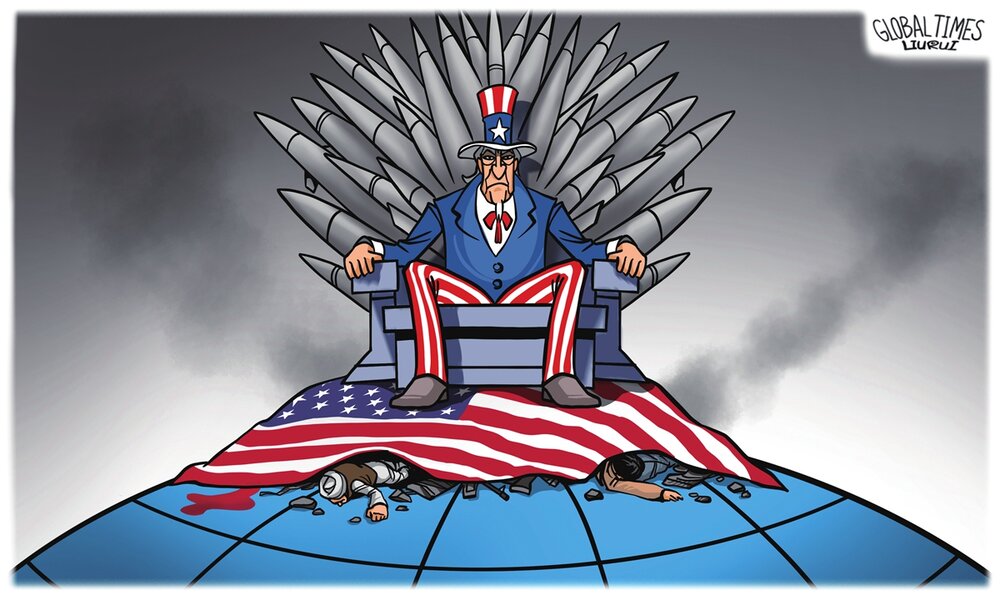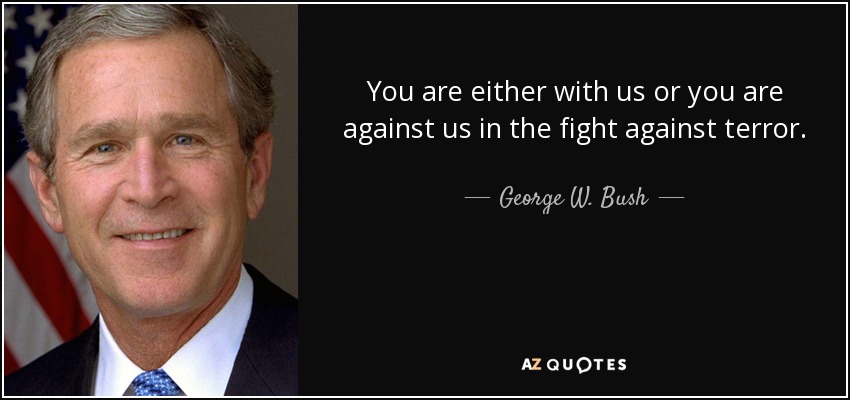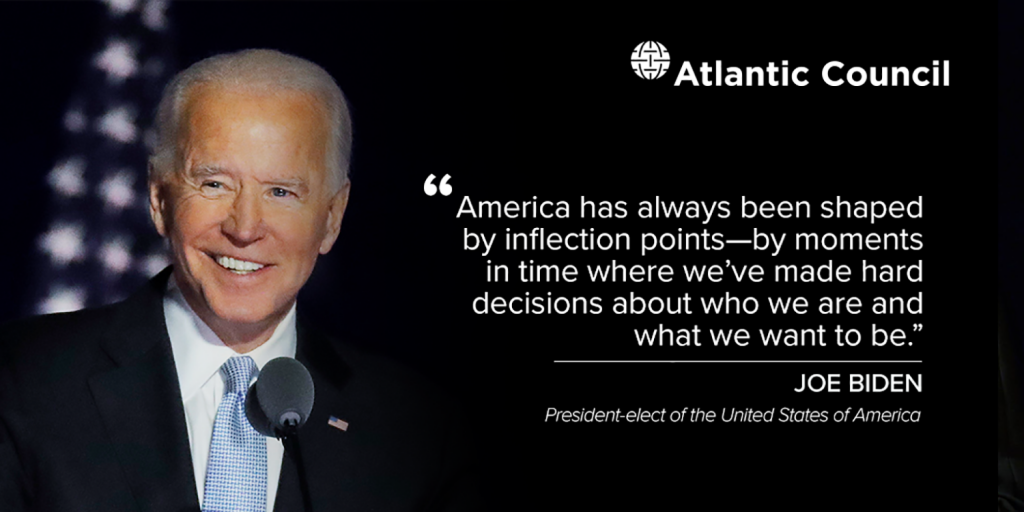
The Reckoning That Wasn’t:
Why America Remains
Trapped by False Dreams of Hegemony
Andrew J. Bacevich / Foreign Affairs (March/April Issue)
(February 28, 2023) — Over the course of many evenings in 1952 and 1953, when I was a kindergartner, my family gathered around a hand-me-down TV in the Chicago housing project where we lived to watch Victory at Sea. With stirring music and solemn narration, this 26-part documentary produced by NBC offered an inspiring account of World War II as a righteous conflict in which freedom had triumphed over evil, in large part thanks to the exertions of the United States. The country had waged a people’s war, fought by millions of ordinary citizens who had answered the call of duty. The war’s outcome testified to the strength of American democracy.
Here was history in all its seductive and terrible magnificence. Here, too, was truth: immediate, relevant, and compelling, albeit from a strictly American point of view. If the series had an overarching message, it was this: the outcome of this appalling conflict had inaugurated a new age in which the United States was destined to reign supreme.
The series had a profound effect on me, reinforced by the fact that both of my parents had served in the war. For them and for others of their generation, the great crusade against Germany and Japan was to remain the defining event of their lives and seemed destined to define the lives of future generations, as well.
Yet Victory at Sea hinted at difficulties ahead. The concluding episode was titled “Design for Peace” but offered nothing of the sort. Instead, it conveyed something more akin to a warning. “One bomb from one plane and 78,000 human beings perish,” the narrator intoned, as a camera panned across images of a devastated Hiroshima. “Two bombs, and World War II is over.”
Grainy footage of liberated concentration camps and scenes of homeward-bound troops flickered across the screen. Then, with a cryptic reference to “the free world on its march to tomorrow” and a quote from British Prime Minister Winston Churchill extolling the importance of resolution, defiance, magnanimity, and goodwill, the series simply ended. To discern what the most devastating conflict of all time signified politically or morally, viewers would have to look elsewhere.
The abrupt ending made a certain amount of sense. After all, by the time Victory at Sea aired, certain wartime US allies had become bitter adversaries, a race was underway to build nuclear weapons even more lethal than those the United States had dropped on Japan, and American troops were once more engaged in combat, this time in Korea, in a conflict that would not end in even the approximation of victory. If anyone had a design for peace, it had been shelved. This much appeared certain: American global supremacy would not be uncontested.
Even so, for most Americans, World War II remained the authoritative source of relevant memory, with the Cold War a sequel of sorts. Just as US leadership in World War II had defeated the Third Reich and imperial Japan, so, too, would Washington turn back the Soviet threat and ensure the survival of freedom. As the two events merged in the country’s collective imagination, they yielded a canonical lesson: US global leadership backed by superior military power had become a categorical imperative.
In fact, the hard-won victory of 1945 would turn out to be neither validation nor harbinger. It proved instead to be a source of illusions. In the 1960s, the costly and divisive war in Vietnam seemed to demolish those illusions; the collapse of communism at the end of the 1980s momentarily revived them. The post-9/11 misadventures Washington undertook in pursuing its global “war on terror” once again exposed the claims of US military supremacy as specious.
The disappointing outcomes of the protracted wars in Afghanistan and Iraq should have sounded a wake-up call akin to the one experienced by the United Kingdom in 1956, after the British government orchestrated an intervention to reassert its control of the Suez Canal and, more broadly, put Egyptian President Gamal Abdel Nasser in his place.
The ensuing debacle resulted in a singular humiliation that cost British Prime Minister Anthony Eden his job. Eden’s rival, British Labour Party leader Hugh Gaitskell, described the Suez operation as “an act of disastrous folly” that did “irreparable harm to the prestige and reputation of our country.”
Few observers disputed that judgment. The crisis obliged the British to acknowledge that their imperial project had reached a dead end. The old way of doing things — whipping weaker peoples into line — was no longer going to work.
The past two decades might have functioned as an extended “Suez moment” for the United States. But the US foreign policy establishment has refused to move on, clinging to the myth that what the world needs is more American military power. The failure in Iraq did not prevent Washington from doubling down on its “good war” in Afghanistan — an act of rashness that culminated in a chaotic, humiliating withdrawal in 2021.

That spectacle could have served as an occasion to declare an end to the era defined by World War II, the Cold War, and the aspirations to which they gave rise. But thanks in no small part to Russian President Vladimir Putin, the moment soon passed. Russia’s invasion of Ukraine has revived the postwar tradition of American muscle flexing.
The Afghan war, the longest in US history, has all but vanished from memory, as has the disastrous war of choice that Washington launched 20 years ago in Iraq. Partly as a result, the country seems poised to continue making the same mistakes that led to those debacles, all justified by the ostensible obligations of global leadership.
The war in Ukraine might offer one last chance for Washington to learn a Suez-style lesson — and without even suffering a defeat. So far, US policy on Ukraine has been pragmatic and arguably restrained. But President Joe Bidenand his team routinely talk about the war in ways that suggest an outmoded, moralistic, and recklessly grandiose vision of American power.
Aligning his administration’s rhetorical posture with a sober assessment of the true stakes involved in Ukraine might allow Biden to wean the establishment from its obsession with hegemony. Demonstrating that Americans do not need their country’s role in the world explained to them in the style of a children’s bedtime story would be a bonus.
The danger is that the opposite could happen: Biden’s framing of Ukraine as a crucible for a new era of military-backed American dominance might lock him in, and his administration’s carefully calibrated policy could come to more closely resemble his soaring, ill-considered rhetoric. That, in turn, would lead to an altogether different and more disastrous reckoning.
With US or Against Us
The most authoritative expression of the postwar worldview — the Rosetta stone of American statecraft in the Cold War — is NSC-68, a highly classified document drafted in 1950 by the US State Department’s Policy Planning Staff, led at the time by Paul Nitze. Testifying to “the marvelous diversity, the deep tolerance, the lawfulness of the free society,” this ideologically charged document established the parameters of US policy throughout the Cold War.
Juxtaposed against that free society was “the slave society” of the Soviet Union, which demanded “total power over all men within the Soviet state without a single exception” along with “total power over all Communist Parties and all states under Soviet domination.”
With compelling clarity, NSC-68 made a case for American hegemony. It drew bright lines and erased ambiguities. “In a shrinking world,” the document asserted, “the absence of order among nations is becoming less and less tolerable.” This fact imposed on the United States “the responsibility of world leadership” along with an obligation “to bring about order and justice by means consistent with the principles of freedom and democracy.”
Merely containing the Soviet threat would not suffice. Nor would feeding the world’s hungry or succoring the afflicted. What the United States needed was the capacity and willingness to coerce. With that in mind, Washington committed itself to establishing a dominant military configured as a global police force. Statecraft became an adjunct of military might.
Undiminished by the passage of time, the Manichaean outlook woven into NSC-68 persists today, decades after the Cold War that inspired it. Biden’s frequent insistence that the fate of humankind hinges on the outcome of a cosmic struggle between democracy and autocracy updates Nitze’s central theme. The necessity of US military supremacy — whether measured by Pentagon spending, the number of bases abroad, or a propensity to use force — has become an article of faith.
As the world continues to “shrink” — thanks to globalization and technological progress (and also to expand into space and cyberspace) — the reach of US military forces grows accordingly, a process that stirs little controversy. But if the aim of US hegemony has been to establish global order and justice through the prudent use of hard power, the results have been mixed at best.
Since 1950, people in the English-speaking world and those living in some proximity to Paris and Tokyo have fared relatively well. By comparison, the benefits accruing to the billions living in the global South have been spotty; only occasionally has the opportunity to live longer and healthier lives translated into personal freedom and security. Government respect for individual rights and adherence to the rule of law remains more hope than reality.
Things could have been worse, of course. Imagine, for example, if during the Cold War, the United States had used any of the thousands of nuclear weapons it had acquired at enormous cost. Yet what actually did occur was bad enough. To reflect on the conduct and the consequences of American wars (and sundry covert interventions) since 1950 is to confront an appalling record of recklessness, malfeasance, and waste.

US troops advancing on Baghdad, April 2003
The Iraq war, which began 20 years ago, represents the acme of American military folly — second only to the Vietnam War. Launched with expectations of unleashing a tidal wave of liberation that would transform the Middle East, Operation Iraqi Freedom instead produced a mournful legacy of death and destruction that destabilized the region. For a time, supporters of the war consoled themselves with the thought that the removal from power of the Iraqi tyrant Saddam Hussein had made the world a better place. Today, no amount of sophistry can sustain that claim.
Many ordinary Americans might consider it too harsh to declare that all the sacrifices made by US troops since World War II have been for naught. But it is hard to avoid the conclusion that the result in Iraq was more akin to a rule than to an exception. President Harry Truman’s decision to send US troops north of the 38th parallel on the Korean Peninsula in 1950 was an epic blunder, albeit one eclipsed 15 years later by President Lyndon Johnson’s decision to commit US combat troops to Vietnam.
Beginning in 2001, the war in Afghanistan gave new meaning to the term “quagmire.” As for Iraq, it remains impossible to refute Barack Obama’s 2002 denunciation, delivered when he was a state senator in Illinois, of the approaching US invasion as a “dumb,” “rash,” “cynical attempt” by “weekend warriors” to “shove their own ideological agendas down our throats.”
Yet in each case, those choices served as concrete expressions of what American global leadership seemed to require in the moment. According to the logic embedded in NSC-68, to pass by the opportunity to liberate and unify the two Koreas or to allow the Republic of Vietnam to fall to communism would have been the height of irresponsibility. So, too, would allowing the Taliban to retain power in Kabul. Take seriously the claim that Saddam possessed weapons of mass destruction (and was intent on developing more), and his removal could be seen as a political and moral imperative.
In each instance, however, egregiously faulty judgment squandered — there is no other word — vast troves of American wealth and thousands of American lives (not to mention hundreds of thousands of non-American lives).
Brown University’s Costs of War project has estimated that US military actions since the 9/11 attacks have cost around $8 trillion, a sum several dozen times greater than that approved for the Biden administration’s highly touted “Building a Better America” infrastructure initiative. And it is hard to see how the benefits of those military operations outweighed the costs.
Yet the basic logic that favored intervention in all those cases remains intact. Even Biden, who as vice president opposed a major surge of US forces in Afghanistan and who, as president, ultimately withdrew the troops, has not forsaken a fundamental belief in the enduring efficacy of American military power. His response to defeat in Afghanistan was to propose an increase in Pentagon spending. Congress not only agreed but chipped in a bonus.
Which Ike Do We Like?
The clout wielded by the sprawling US national security apparatus partially explains why this mindset has persisted. On that score, the famous admonition conveyed in President Dwight Eisenhower’s farewell address in January 1961 has lost none of its relevance.
In that speech, Eisenhower warned against “the disastrous rise of misplaced power” in the hands of “the military-industrial complex.” He also proposed a solution: “an alert and knowledgeable citizenry” to keep the country’s “huge industrial and military machinery of defense” in check “so that security and liberty may prosper together.”
But his hope was misplaced. On matters related to national security, Americans have proven to be more indifferent than watchful. Many Americans still revere Eisenhower. But it is not the president of 1961 to whom they tend to look for inspiration but the general of 1945, who secured the unconditional surrender of the Third Reich.
The victory in World War II bestowed a new sense of purpose on US policy, which was subsequently codified in NSC-68. But it also imposed a straitjacket. As the scholar David Bromwich has recently written, “The Second World War is the picture that has held us captive.”
In important respects, the story of US national security policy over the past seven decades centers on an effort to preserve and update that picture. The overarching aim has been to engineer another such victory, thereby delivering security, prosperity, deference, and privilege — or, more broadly, a world run on American terms, a dominance justified by a self-assigned mission to spread freedom and democracy.

The fall of the Berlin Wall, followed by the collapse of communism and the US victory in the 1990–91 Gulf War seemed, for a brief moment, to bring that world within reach. Here were victories that, taken together, arguably compared in scope to that of 1945. The alleged “end of history” had resulted in a unipolar order over which a sole superpower presided as the world’s “indispensable nation.”
Today, such phrases fall into the same category as “white man’s burden” and “the war to end all wars”: they can only be employed ironically. Yet they accurately reflect the intoxication that overtook political elites after 1989. Never has a country putatively devoted to noble causes created or underwritten more mayhem than did the United States following the Cold War, as it set out to smite evildoers everywhere.
Washington’s ideology-fueled bender lasted until 2016, when Donald Trump upended American politics. As a candidate for president, Trump vowed to chart a different course, one that would put “America first.” That seemingly benign phrase had explosive connotations, harking back to widespread popular opposition to possible US intervention on behalf of the United Kingdom as it resisted Nazi aggression.
Trump was not simply promising a less belligerent foreign policy. Knowingly or not, he was threatening to jettison the moral underpinnings of postwar American statecraft.
NATO countries were “not paying their fair share” and were “ripping off the United States,” Trump complained during a characteristic rant at a 2016 campaign rally. “And you know what we do? Nothing. Either they have to pay up for past deficiencies or they have to get out. And if it breaks up NATO, it breaks up NATO.”
He returned to this theme again and again, including in his inaugural address. “We’ve defended other nations’ borders while refusing to defend our own, and spent trillions and trillions of dollars overseas, while America’s infrastructure has fallen into disrepair and decay,” Trump declared. “We’ve made other countries rich while the wealth, strength, and confidence of our country has dissipated over the horizon.” Not anymore, he pledged: “from this day forward, it’s going to be only America first.”
Such heresies triggered a nervous breakdown from which the US foreign policy establishment has yet to fully recover. Of course, Trump’s mendacity and historical illiteracy made it hard to tell whether he even grasped what the phrase “America first” signified. And even if he did, his staggering incompetence and short attention span allowed the status quo to survive.
During Trump’s term in office, the endless war that started after 9/11 dragged on. Alliances remained intact. With minor adjustments, so, too, did the country’s military footprint abroad. At home, the military-industrial complex prospered. A costly modernization of the US nuclear strike capabilities continued, attracting minimal attention.
All in all, the essentials of the NSC-68 paradigm survived, as did the conviction that World War II somehow retained its relevance as a policy touchstone. “Isolationist” remained an epithet hurled at anyone not supporting the vigorous use of US power abroad to cure the world’s ills.
Yet even as establishment thinking about the US role in the world remained mired in the past, the world itself was undergoing profound changes. And herein lies a central paradox of the Trump presidency: Trump’s vow to abandon the postwar paradigm led the establishment to circle the wagons and mount a spirited defense of the NSC-68 framework — even as the United States confronted a rising tide of problems to which that framework was all but irrelevant.
The list is long: the rise of China, a deepening climate crisis, a loss of control of the US southern border, the evaporation of working-class opportunities, skyrocketing drug-related fatalities, a brutal pandemic, and domestic upheaval spurred by polarization along racial, ethnic, socioeconomic, partisan, and religious lines.
Those divisions fueled Trump’s election in 2016, allowed him to win an even larger number of votes in his losing reelection campaign, and made possible his effort to prevent the peaceful transfer of power and overthrow the constitutional order in the wake of his defeat.
The Mythmakers
These cascading failures and shortcomings and the inability of the postwar vision of US power to contend with them seemed to herald a Suez moment. Instead, in the history of US statecraft, the Biden presidency marks a turning point when things didn’t turn.
Midway through Biden’s term, US grand strategy is mired in a tangle of unacknowledged contradictions. Preeminent among them is Washington’s insistence that the United States must sustain the now hallowed model of militarized global leadership even as the relevance of that model diminishes, the resources available to pursue it dwindle, and the prospects of preserving the country’s privileged place in the international order decline. Yet the foreign policy establishment insists there is no conceivable alternative to militarized American leadership — pointing above all to the Russian invasion of Ukraine to make its case.
In this view, the war in Ukraine revalidates NSC-68. But the Russian army is not the Red Army — not even close. Unless Putin opts to use nuclear weapons, an unlikely scenario, Russia poses a negligible threat to the security and well-being of the United States. A Russian army that can’t even make it to Kyiv doesn’t pose much of a danger to Berlin, London, or Paris, much less to New York City.
The ineptitude displayed by Russia’s military reinforces the argument that European democracies, should they make the effort, are more than capable of providing for their own security. In sum, for Washington, the war should have bolstered the case for classifying Russia as someone else’s problem.
If the United States has nearly $50 billion to spare (the amount that Congress allotted to assist Ukraine between February 2022 and November 2022), it should use that money to alleviate climate change, address the border crisis, or ameliorate the distress of working-class Americans — vital tasks that the Biden administration treats with far less urgency than arming Ukraine.
Biden has spoken of the war in Ukraine in sweeping terms that echo the rhetoric of earlier eras. “Now is the hour: our moment of responsibility, our test of resolve and conscience of history itself,” he intoned in a State of the Union address delivered barely a week after Russia invaded Ukraine, in February 2022. “And we will save democracy.”
Such a moment and such a task would seem to involve not only demonstrating commitment and resolve but also making sacrifices and hard choices. But the US effort in Ukraine has not required those things; it is a proxy war, and Biden has wisely pledged that, despite the alleged existential stakes for democracy, no US troops will fight on behalf of Ukraine.
Harking back to NSC-68, administration rhetoric — compounded by an endless stream of media commentary — has created the impression that the Ukraine war has summoned the United States to once again grab the tiller of history and steer humankind toward its intended destination. But this is precisely the sort of hubris that has led the country astray time and again.
It is hard to imagine a better chance to move past this self-satisfied posturing and find a more responsible way to talk about and understand the US role in the world — but Biden seems determined to miss the opportunity. Consider this passage from the administration’s 2022 National Security Strategy:
Around the world, the need for American leadership is as great as it has ever been. We are in the midst of a strategic competition to shape the future of the international order.
Meanwhile, shared challenges that impact people everywhere demand increased global cooperation and nations stepping up to their responsibilities at a moment when this has become more difficult.
In response, the United States will lead with our values, and we will work in lockstep with our allies and partners and with all those who share our interests. We will not leave our future vulnerable to the whims of those who do not share our vision for a world that is free, open, prosperous, and secure.
This word salad offers something for everyone but is devoid of specificity and cannot serve as a basis for a coherent policy. Marketed as a statement of strategy, it instead testifies to the absence of strategy.
The Kennan Way
What the United States needs today is a clear statement of strategic purpose that will replace the zombie NSC-68 paradigm. Almost unnoticed, such an alternative has been available ever since the heady days following the US victory in World War II. In 1948, at the outset of the Cold War, George Kennan (Nitze’s predecessor as director of policy planning) proposed an approach to measuring the success of US policy that was devoid of ideological fantasies.
Noting that the United States at that moment possessed “about 50% of the world’s wealth but only 6.3% of its population,” he suggested that the task ahead was “to devise a pattern of relationships which will permit us to maintain this position of disparity without positive detriment to our national security.”
The aim was to keep Americans safe while preserving and even enhancing the material abundance that made the United States the envy of the world. Achieving that goal, according to Kennan, would require the United States “to dispense with all sentimentality and day-dreaming” and concentrate “on our immediate national objectives.” The country could ill afford “the luxury of altruism and world-benefaction,” Kennan wrote.
Kennan’s long memorandum outlined in considerable detail how the United States should deal with the problems of the post-war world. That world no longer exists. So it is not the particulars of his analysis that should command attention today but the spirit that informs it: realism, sobriety, and an appreciation of limits, along with an emphasis on purposefulness, discipline, and what Kennan called “economy of effort.” In 1948, Kennan feared that Americans might succumb to “the romantic and universalistic concepts” that had sprouted during the recent war. He was right to worry.
Since 1948, the economic disparity to which Kennan referred has dwindled. Yet it has not disappeared: today, the United States accounts for just over four percent of the world’s population but still holds around 30 percent of the world’s wealth. And within the country, the distribution of that wealth has shifted dramatically.
In 1950, the richest 0.1 percent of Americans controlled around 10 percent of the country’s wealth; today, they control close to 20 percent of it. Meanwhile, the country’s fiscal health has declined: the total US national debt now exceeds $31 trillion, with the federal deficit having averaged more than a trillion dollars per year since 2010.

Trump in Brussels, July 2018.
A combination of grotesque inequality and feckless profligacy goes a long way toward explaining why such an immense and richly endowed country finds itself unable to contend with dysfunction at home and crises abroad. Military might cannot compensate for an absence of internal cohesion and governmental self-discipline. Unless the United States gets its house in order, it has little hope of exercising global leadership — much less prevailing in a mostly imaginary competition pitting democracy against autocracy.
Washington urgently needs to follow the advice that Kennan offered in 1948 and that generations of policymakers have ignored: avoid needless war, fulfill the promises in the country’s founding documents, and provide ordinary citizens with the prospect of a decent life. A place to begin is to reconfigure the US military into a force designed to protect the American people rather than to serve as an instrument of global power projection. The United States should require the Defense Department to defend.

A To-do List for US Survival
What might that look like in practice? For starters, it would mean taking seriously the obligation, embedded in the Nuclear Nonproliferation Treaty, to eliminate nuclear weapons; closing down various regional military headquarters, with US Central Command first on the chopping block; reducing the size of the US military footprint abroad; prohibiting payments to military contractors for cost overruns; putting a lock on the revolving door that sustains the military-industrial complex; reinvigorating congressional war powers as specified by the US Constitution; and, barring a declaration of war, capping military spending at two percent of GDP — which would still allow the Pentagon to lead the world in military expenditures.
In 1947, in perhaps the most famous essay ever to appear in Foreign Affairs, Kennan, using the byline “X,” wrote that “to avoid destruction, the United States need only measure up to its own best traditions and prove itself worthy of preservation as a great nation.” Today, those traditions may be in tatters, but Kennan’s counsel has lost none of its salience.
The chimera of another righteous military triumph cannot fix what ails the United States. Only the “alert and knowledgeable citizenry” that Eisenhower called for can fill the needs of the moment: a polity that refuses to tolerate the further misuse of American power and the abuse of American soldiers that have become the hallmarks of our time.
Posted in accordance with Title 17, Section 107, US Code, for noncommercial, educational purposes.


